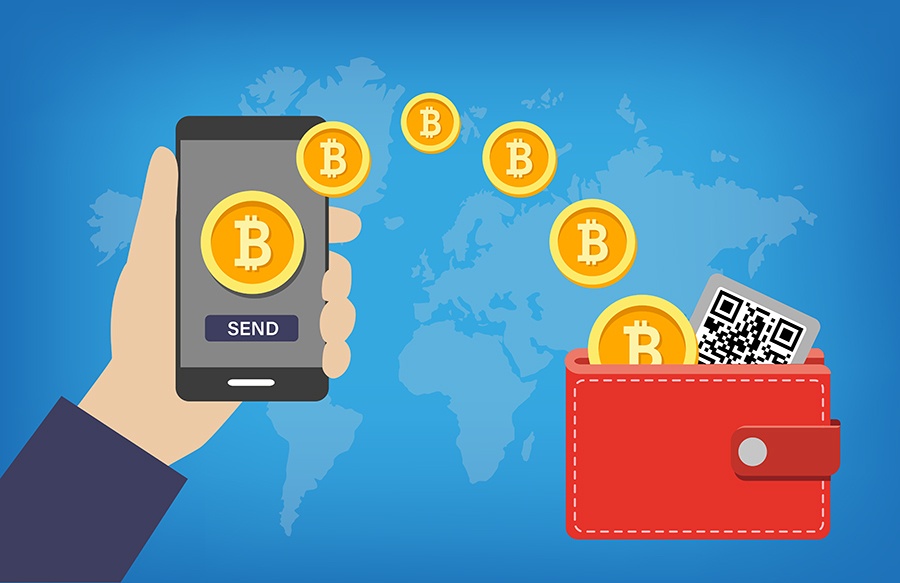The Philippines is rapidly emerging as one of Southeast Asia’s digital-first and crypto friendly economies - it is driven by fintech adoption, remittance demand and digital entrepreneurship. In the realm of businesses and startups exploring new payment technologies, accepting cryptocurrency payments is no longer a niche concept, it is in fact a competitive edge in the contemporary payment scenarios. Through this article, we’ll head out to break down top ways to accept crypto payments in the Philippines, how to integrate and leverage them and what benefits can each of them offer for businesses running offline as well as online.
Understanding why businesses in the Philippines are adopting crypto payments
Among the various reasons driving crypto adoption, the highlights include;
- High Remittance Volume - Philippines is one of the world’s largest remittance markets with over $35 billion as annual remittance share. Crypto in this scenario, offers faster and cheaper global transfers.
- Digital Economy Growth - With a large population actively adopting internet based services, the e-commerce sector is booming with opportunities making the country a hotspot for blockchain based businesses.
- Regulatory clarity - The Bangko Sentral ng Pilipinas (BSP) recognizes Virtual Asset Providers (VASPs) which ensure licensed, crypto compliant transactions.
- Stablecoin and USD demand - As fluctuating exchange rates become a major setback, stablecoins like USDC and USDT are becoming popular for cross border and business payments in a wider realm.
With a bunch of reasons to corroborate a shift towards crypto payments, the Philippines is moving towards independent chain transfers at the forefront. Let’s understand the best 5 ways to implement these payments in real world use cases.
Top 5 ways to accept crypto payments - the case of Philippines
- Crypto payment gateways
The easiest and most scalable way to accept crypto payments in the Philippines is through crypto payment gateways. These platforms are designed to handle payment processing, conversion and settlement allowing businesses to accept Bitcoin, Ethereum, USDT and USDC securely and effectively. Some examples of such gateways include TransFi Bizpay, Binance Pay, BitPay and Coins.ph for businesses.
Benefits of using these gateways can be classified as;
- They can accept multiple crypto currencies like BTC, USDT, USDC, ETH etc.
- They allow instant conversion to USD or PHP.
- They are secure and fully compliant with BSP regulations.
- They provide API integrations for business and Saas platforms.
These characteristics make them the best fit for online stores, service platforms and digital agencies looking for plug and play solutions.
- Direct wallet to wallet payments
Businesses can also target receiving direct crypto payments to their wallets. This is the simplest setup and is ideal for freelancers and small merchants who want to take full control of their payment systems and end-to-end processes.
Let’s understand its working;
- Setup a non-custodial or exchange wallet. Some examples of these wallets are Trust Wallet, Binance or Metamask.
- Share your wallet address or QR code with customers.
- Receive payments directly into your chosen crypto wallet.
First hand benefits of using these wallets include;
- Overcoming any third party fees or intermediaries.
- Full ownership of received crypto with system inbuilt accessibility.
- Ideal for one-time or low volume transactions.
- These setups are best for freelancers, consultants and small sellers.
They do require manual tracking and processing but the authority advantage makes them an ultimate solution.
- Stablecoin payments (USDC, USDT and BUSD)
For businesses concerned about the volatility challenges, stablecoin payments give them the best middleground. These digital assets are pegged 1:1 to the US Dollar, making them ideal for predictable transactions.
How do stablecoins provide a smart solution in the Philippines?
- They eliminate currency fluctuation.
- They directly enable instant cross border payments.
- Stablecoins can be easily converted to PHP through local exchanges.
- They are extremely useful for payroll, supplier payments and remittance settlements.
Popular stablecoins include USDC (Coin), USDT (Tether) and BUSD (Binance USD). Stablecoin payments are best for exporters, freelancers, digital agencies and companies dealing in USD based contracts.
- Licensed crypto exchanges and platforms
Another secure and highly adopted way to receive cryptocurrency payments in the Philippines is through licensed VASPs (Virtual Asset Service Providers). These are exchanges authorized by the Central bank of the Philippines (Bangko Sentral ng Pilipinas) to handle crypto transactions legally.
Some examples of BSP registered exchanges include coins.ph, PDAX, Maya Crypto and TransFi for B2B payments and settlements.
The benefits for using these transfers are;
- They are compliant with Philippines regulations.
- They can easily be converted from crypto to PHP.
- They have inbuilt reporting and KYC features.
- These systems reduce counterparty risks.
These kinds of crypto payments are best for businesses which want to stay natively superior, prioritize compliance, record keeping and transparency.
- Custom API integrations for crypto payments
Larger businesses and fintech platforms can integrate custom crypto payment APIs into their systems and automate payment collection and reconciliation.
How do API integrations work?
- Get started by integrating an API from a provider like TransFi, BitPay or Coinbase commerce.
- Once done, you can accept and settle crypto payments automatically.
- You can track your transactions via a unified dashboard.
Key benefits of these transactions are;
- They are scalable and automated for large transaction volumes.
- They provide seamless integration with websites, apps and ERP systems.
- They have options for instant conversion from crypto to PHP or USD providing a flexible currency format.
These kinds of transactions are best suited for fintech startups, Saas companies, marketplaces and global exporters.
Steps to receive crypto payments in the Philippines
To summarize, follow the following steps to receive crypto payments with ease;
- Choose a crypto payment method. You could go for a gateway, exchange or wallet.
- Verify BSP compliance if using a platform.
- Setup a digital wallet or merchant account.
- Display crypto payment options for customers during checkout or invoice options.
- Accept and confirm payment
- If needed, convert to PHP using local exchange.
- Maintain clear transaction records for compliance and accounting.
Benefits of accepting crypto payments
Crypto payments enable;
- Lower transaction costs per payment as compared to traditional bank or card payments.
- Faster international transfers as there is no waiting for clearing or remittance delays.
- Access to global customers with digital currencies.
- Protection against currency fluctuations.
- Provides enhanced transparency through blockchain tracking.
- Path for stablecoin settlements for stable and predictable revenue.
What’s next?
As digital finance reshapes Southeast Asia, the Philippines stands out for its active stance on crypto adoption. For businesses, crypto adoption and integrating digital finance and crypto brings multiple benefits like low costs, transparency and enhanced speed along with access to new markets. Whether you prefer direct crypto wallet setup, stablecoins or a fully automated gateway system, the key is to start early and gain access to fully compliant and safe systems. If this sounds like a need for your business or relates to your growth goals, talk to experts at TransFi or explore TransFi’s crypto merchant solutions to integrate Bitcoin, USDT or USDC into your payment systems today.
Also read: How to Accept Payments in Vietnam: Bank Transfer, Wallets, and VietQR
Frequently asked questions (FAQs)
- What crypto currencies can a business accept in the Philippines?
Most businesses accept Bitcoin (BTC), Ethereum (ETH), USDC or USDT depending on the user base and customer preference.
- What are the benefits of API integrations for crypto transfers?
- They are scalable and automated for large transaction volumes.
- They provide seamless integration with websites, apps and ERP systems.
- They have options for instant conversion from crypto to PHP or USD providing a flexible currency format.
- What’s better for payments - crypto or stablecoins?
Stablecoins like USDC or USDT are ideal for reducing volatility risks and are preferred over other crypto payments.
- How can I convert stablecoin to PHP?
Stablecoins can be instantly converted to PHP via complaint off-ramp providers or be stored as stablecoin and converted at convenience.
- Is it safe to accept crypto payments?
Totally! Blockchain payments are encrypted end to end, they are verifiable and fraud proof.
Table of Contents
Suggested Article
Explore our products

Make global payments at the speed of a click

Accept payments, remove borders.

Unlock Seamless Digital Currency Transactions Anywhere








.png)














